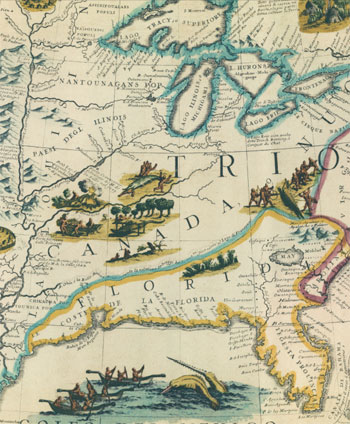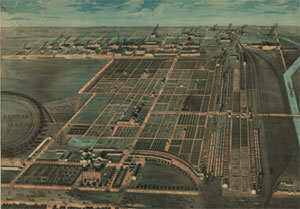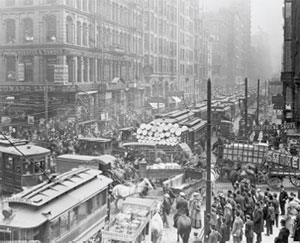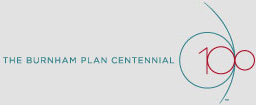Company Name
Rerouting the Metropolis
A Busy Crossroads
Chicago's role as a continental crossroads came from its location linking two great navigable water systems. To the east, the waters of the Great Lakes flowed out the St. Lawrence River to the Atlantic Ocean; to the west and south, the Illinois River flowed into the Mississippi River and the Gulf of Mexico. Native Americans and early European explorers understood this, as the 17th-century map shows. Connection between the two water systems was initially made by a short and easy portage over land from the South Branch of the Chicago River to the Des Plaines River. In 1848, the new Illinois and Michigan Canal provided an all-water connection between the Chicago and the Illinois rivers, solidifying Chicago's strategic position.
Railroads fortified Chicago's position as a continental crossroads. In 1865, Chicago's railroads established the Union Stockyards, consolidating all meat handling in one location at the edge of town. Rail lines brought in livestock raised hundreds of miles to the west, spurs linked the yards and slaughterhouses, and other lines delivered meat to the markets of the industrial East.
The radial pattern of the railroad lines, as shown in the map of Chicago and Environs (below), linked the heart of Chicago to its suburbs and beyond, but concentrated traffic downtown. The resulting congestion, pollution, and safety hazards caused, in the words of the plan, "the irritation of the nerves." The abundance of different types of public transportation, including horse-drawn omnibuses, cable cars, electric trolleys, and elevated trains, aggravated the traffic mess. Burnham and Bennett considered this a critical problem that undermined the quality of life and threatened Chicago's future.






